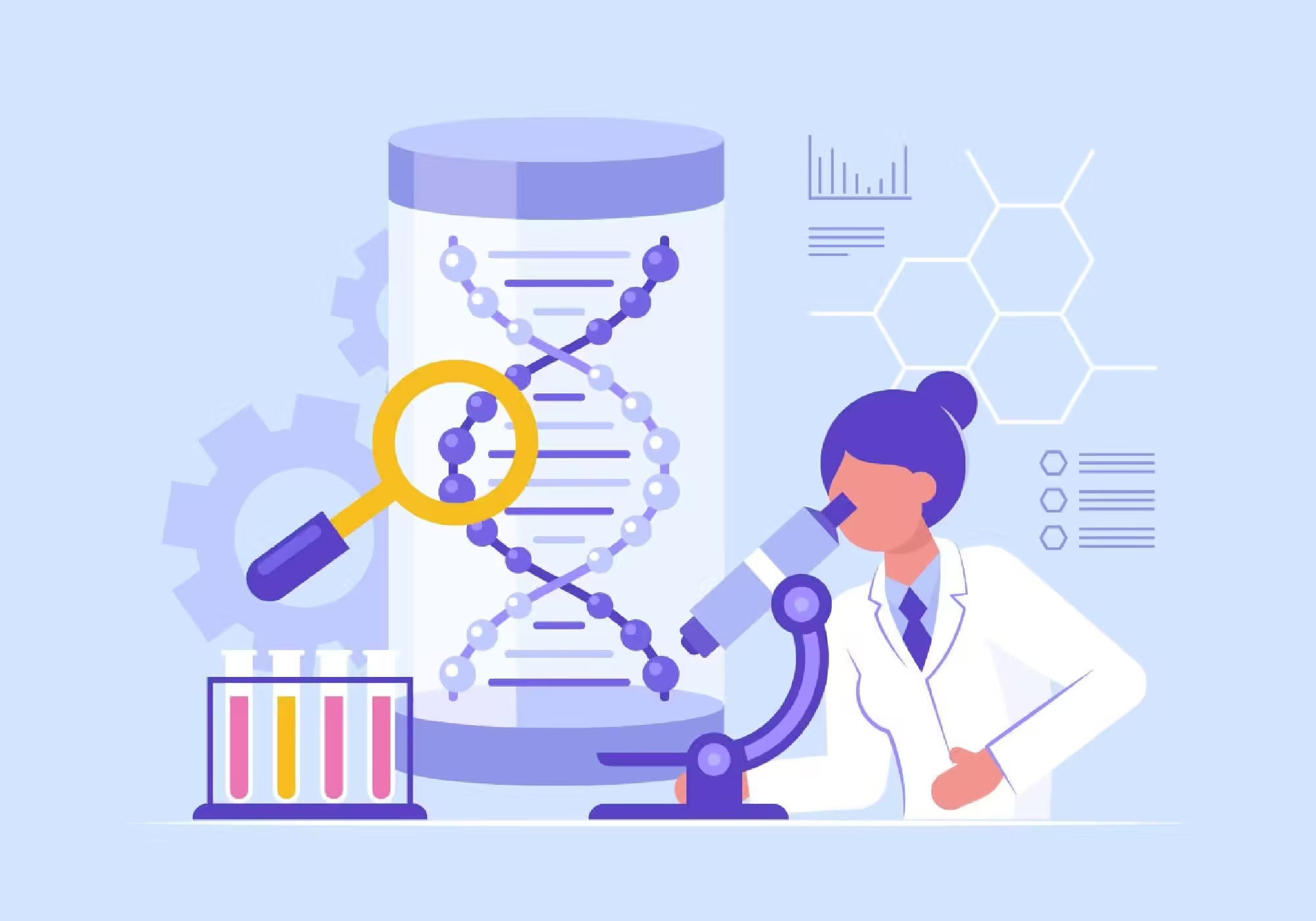Thus, quantum computing signifies a revolution in data security! Quantum computers carry out calculations much, much faster than conventional computers. The speed it offers poses a huge risk to our data security. Enter the era of post quantum cryptography. Its goal is to secure our data from future quantum attacks, keeping us safe in the virtual world. Quantum Threat Quantum computing changes everything when it comes to computation. It does this through the use of qubits (quantum bits), which can solve complex equations faster than traditional computers. This new power is capable of cracking traditional encryption measures. For example, algorithms like RSA and ECC encrypt online banking as well as people’s communications at an individual level. But these are not capable of withstanding the changes that quantum computers bring. These algorithms be cracked by a quantum machine in seconds, leaving your personal and financial data vulnerable. It’s worse than just individuals. Companies use encryption to protect customer data. Nobody wants a hacker to break into their systems. This leads to financial losses and legal troubles. It can also damage the organization’s reputation. As quantum computers advance, it’s important to understand why we need post-quantum cryptography. Need for Post Quantum Cryptography It is a form of post-quantum cryptography, which means it involves algorithms that are considered secure against quantum attacks. It is because of these algorithms that, even in a world with quantum computers, our private data remains secure. Traditional cryptographic techniques are good enough for now, yet they become obsolete very quickly. These systems can be weakened by quantum computers, so post-quantum solutions are necessary to protect our data. As the quantum future approaches, we must rethink our security mindset. This includes building new quantum-resistant algorithms. Companies should really spend money on research to make data more secure and gain the trust of users. Principles of Post Quantum Cryptography There are several core principles guiding post-quantum cryptography. Here are some of the main ideas: 1. Quantum Resistance It is vital for algorithms to withstand potential attacks from quantum computers. This ability is vital to maintaining data security moving ahead. 2. Algorithm Diversity Using different algorithms helps reduce the risk of a single point of failure. Organizations should avoid relying on only one solution; a diverse strategy is essential. 3. Compatibility with Existing Systems Post-quantum algorithms need to work seamlessly with existing systems. Ensuring a smooth transition without significant disruptions is crucial for continued operations. Popular Post Quantum Cryptographic Algorithms Various promising algorithms are emerging in post-quantum cryptography. Here are some examples: These algorithms bring unique advantages and are crucial for effective post-quantum cryptography. Organizations should evaluate these options and choose the ones that best suit their specific security needs. Implementing Post-Quantum Cryptography Switching to post-quantum cryptography requires careful planning and implementation. Organizations can take the next steps: By adopting post-quantum cryptography, businesses can protect their data and build trust with customers. Furthermore, taking these proactive steps shows a commitment to security, which enhances a company’s reputation. Future of Data Security As quantum computers become more powerful, the way we keep data secure will inevitably change. Thus, organizations must be proactive in adopting post-quantum cryptographic systems. By prioritizing security measures, businesses can keep their data safe from future threats. The journey to post-quantum security is ongoing and requires commitment and continuous improvement. In this ever-evolving landscape, security is not a one-time effort; it is an ongoing process. As Bruce Schneier wisely stated, “Security is not a product, but a process.” This quote highlights the need to stay vigilant and adapt to new threats as they emerge. References
Synthetic Biology: Simplified DNA Engineering & Genetics
In recent years, the field of biology has undergone exciting changes. We are no longer mere observers of life; We now have the ability to change it. Through simplified DNA engineering, a fundamental aspect of synthetic biology, we have opened up a world of possibilities. Imagine altering organisms to produce more resilient crops or create lifesaving medicines. This is possible because we have gained the knowledge to manipulate the very basis of life, DNA. What is Synthetic Biology? Synthetic biology is not as complicated as it sounds. At its core, it is about designing and creating new biological parts or reprogramming existing parts. This branch of science combines engineering principles with biology, allowing researchers to change organisms at the genetic level. Essentially, synthetic biology focuses on creating synthetic DNA and inserting it into living systems to achieve a desired purpose. Think of synthetic biology as a modern version of nature. Where nature evolves slowly, synthetic biology can make precise changes quickly. By rewriting DNA, we can control the behavior of organisms, making them carry out functions that we find useful. How DNA Engineering Works Basics of DNA Manipulation DNA engineering has come a long way. With tools like CRISPR and gene editing techniques, scientists can now cut, copy, and paste DNA sequences. Let us break down the process: This ability to edit DNA has made synthetic biology one of the most exciting scientific fields of the 21st century. Simplified DNA Engineering is Game-Changing Until recently, editing genes was a slow and expensive process. Today, simplified DNA engineering has made it possible to edit genes quickly and at a much lower cost. This leap in technology has given rise to a new era of genetic research. Whether it is growing disease-resistant crops or creating new drugs to treat diseases, the possibilities are inconceivable. Applications in Medicine and Agriculture The practical applications of synthetic biology are enormous. Here are some of the ways it is changing our world: 1. Medicine Synthetic biology is helping researchers develop personalized medicines and treatments for diseases like cancer. For example, gene therapy can now cure genetic disorders at their source. 2. Agriculture By creating crops with synthetic DNA, we are creating plants that can withstand harsh weather, pests, and even drought. This helps increase food production and sustainability. Everyday Impact of Synthetic Biology Synthetic biology has already made a significant mark on our daily lives. You are not realizing it. Still, products like synthetic insulin, which helps millions of people with diabetes, are a direct result of DNA engineering. Genetically modified crops also contribute to the food supply, ensuring we have enough resources to feed a growing global population. As technology advances, synthetic biology will continue to revolutionize the industries we depend on every day. Learn DNA Engineering Synthetic biology seems advanced, but there are ample resources available to get started with DNA engineering, even for beginners. Tools for Beginners If you are interested in learning more, here are some beginner-friendly tools and resources: These tools make learning synthetic biology concepts easy, even for someone with limited biology background. Conclusion Synthetic biology, especially simplified DNA engineering, is taking genetics to new heights. We are no longer spectators in nature’s play, we have become active participants. We be growing stronger crops. Furthermore, we are creating new medicines. We are also programming bacteria to clean up the environment. Synthetic biology has enormous potential. As this technology continues to develop, its potential to change the world grows every day. References
How Waste-to-Energy Powers Cost-Effective Water Treatment
Water treatment is a very important and commonly overlooked process, and its energy intensity can be very significant. Thankfully, there is a technology that is not only reducing these costs but also helping the environment: waste-to-energy water treatment. These can be called innovative because they help convert industrial waste into electricity. This conversion improves the cost-effectiveness of water treatment plants. It always amazes me how great ideas can bring about change. Waste-to-energy is an example of that. It is energy efficient. This process allows many industries to deal with their waste. They produce clean water at the same time. All of this happens in the process of reducing costs. So, let’s see how it works. Turning Industrial Waste into Energy When people think of industrial waste, they think of landfills or pollution. But that waste can actually be a resource used very effectively. Anaerobic digestion is a process. It turns organic matter, like food scraps or plant matter, into a gas called biogas. This biogas is recoverable and can be used as fuel. For water treatment plants, this means they can generate electricity to supply their plants. They use the waste they generate or the waste from nearby industries. They use local power generation and do not rely on power from an external grid. This approach has significantly reduced costs. This change is easy to think about, but in reality, it is crucial. In fact, here is how that waste can be used to power the treatment, and save the facility money while doing so: The Financial Upside of Waste-to-Energy Let’s talk numbers. Energy is one of the biggest expenses for any water treatment facility. But when you convert waste to energy, you’re cutting down on the amount you need to buy from traditional sources. And that reduction can be significant. Here’s why: This way, water treatment plants reduce their operating costs, allowing more money to flow into the business. And who would not want that? Environmental Benefits of Waste-to-Energy Well, now I love the concept of business and the environment complementing each other. Waste-to-energy systems do just that by providing an even cleaner source of energy than fossil fuels. Such systems reduce the amount of waste buried in landfills. They emit fewer greenhouse gases by using waste that would otherwise be a pollutant. Here’s a simple description of the environmental benefits: Advantage Impact Less waste sent to landfills Reduces environmental contamination Fewer emissions Lowers carbon footprint Renewable energy source Replaces fossil fuels It is a win-win for both the planet and the industries using this technology. Success Stories of Waste-to-Energy Before I discuss waste-to-energy systems in detail, I’d like to share two success stories. These are not small ideas on paper, they are happening today, and they are changing the world. 1. California Water Treatment Facility This plant integrated a waste-to-energy system and cut their energy costs by 40%. Using biogas produced from organic waste, they now generate enough energy to run their entire operation. It is incredible to see such a huge reduction in energy costs while maintaining efficiency. 2. Denmark’s Biogas Powerhouses In Denmark, food waste collected from households and restaurants is separated. It is then converted into energy through a process called bioenergy conversion. This energy is used to run water treatment plants. Some of it is also fed into the electricity grid. It’s a very basic idea, but it has very serious consequences. The next examples show how waste-to-energy production has played a vital role in sustainable water treatment. It also contributes to sustainable cost management. “Waste is only waste if we waste it.” — Will.i.am Future Potential of Waste-to-Energy Water Treatment The potential here is huge. As more industries adopt waste-to-energy systems, we will see a change in the way water treatment plants operate. In fact, governments and environmental agencies are already offering incentives to attract more companies to this technology. I really think this is the future of water treatment. It’s not just about saving money, it is about creating a system that works for the environment too. Conclusion Water treatment has always been energy intensive, but with waste-to-energy systems, this is starting to change. By converting industrial waste into energy, companies can save costs, reduce their environmental impact, and create more sustainable operations. If industries continue to adopt this method, the future will change. Waste will not just be waste. It will become a powerful resource.
How Nanoplastics in Bottled Water Pose a Health Risk
You pick up a bottle of water and think it is the cleanest and safest choice, right? But here is a surprise: bottled water also holds hidden dangers. One of these hidden dangers is nanoplastics. These are very small plastic particles that you can’t see, but they can affect your health. In fact, scientists have found nanoplastics in bottled water, which can cause long-term health problems. Sounds scary? Don’t worry, I will explain it for you in simple terms. Let us find out what these tiny plastics are. Let us learn how they get into your bottled water. Find out what you can do to protect yourself from them. What Are Nanoplastics? Nanoplastics are incredibly tiny pieces of plastic, so small you would need a microscope to see them. They are less than 100 nanometers in size. To give you an idea, a strand of human hair is about 80,000 nanometers thick. These particles are much smaller than that. Nanoplastics come from larger pieces of plastic that break down over time. You will find them in everyday items like plastic bags, containers, and, unfortunately, water bottles. When plastic bottles are left in the sun, they can break down into tiny plastic pieces. These pieces get into the water you drink. How Do Nanoplastics Get into Bottled Water? These tiny particles get into your bottled water in one of two ways: Incredibly, there is strong evidence that bottled water has more nanoplastics than tap water. You assume bottled water is cleaner; nevertheless, you will find it exposes you to more plastic particles. “In every drop of water, there’s a story of life… or of pollution.” — Jacques-Yves Cousteau Health Risks of Drinking Nanoplastics This would be really confusing, and you would be thinking, “Well, no big deal, I can’t see them.” Well, as we have already seen, although these are called nanoplastics, they are only a few nanometers in diameter. Still, they can affect your health to a great extent. Some studies have indicated that when you drink water containing nanoplastics, they pass through the blood vessels. Then, they circulate to other parts of the body, including the liver, kidneys, and lungs. Researchers are yet to find out the extent of their effects. According to studies, nanoplastics can cause inflammation. They can also cause cell death and hormonal disruption. There are other potential effects besides these. They do not give you an immediate illness that requires a doctor. Still, they can eventually give you endless health problems. How Nanoplastics Affect Your Body Here’s how these tiny invaders can harm your body: Do you need to worry? If you are drinking bottled water every day, chances are you are consuming more nanoplastics than you think. While this is not significant right now, the long-term effects are worrisome. The biggest concern is how these plastics accumulate in your body over time. As more research comes to light, scientists are starting to understand just how dangerous this can be to our health. How to Avoid Nanoplastics in Your Water Do not panic! There are some simple ways to reduce exposure to nanoplastics in water. Here are some easy steps you can take: What Are the Safer Alternatives? Luckily, you have plenty of options that don’t use plastic bottles. Here are some great alternatives: The Future of Nanoplastics Research Researchers are still trying to learn the full impact of nanoplastics on our health. As they learn more, we will see new rules and regulations for bottled water and plastic use. The good news is that by becoming aware of this issue now, you can take steps to protect yourself. Conclusion At first glance, drinking water in a bottle is a perfect solution, but it also carries some risks. Nanoplastics are particles that can make their way into your water supply, and they harm your health one day. Needless to say, you can avoid exposure to such harmful particles by changing small habits. Drink filtered tap water or use reusable bottles to reduce risk. It’s a bit tricky, but small changes can often be beneficial. Replacing plastic can help both the body and the earth. Reference




